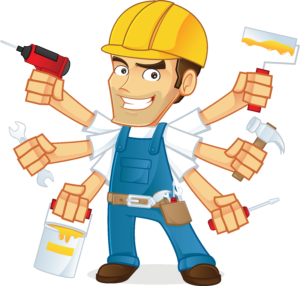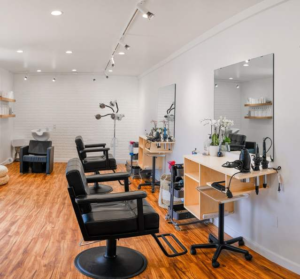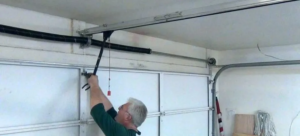Early Baby Boomer retirements and a decline in interest in the trades are contributing to a shrinking electrician labor pool. This workforce challenge poses a significant hurdle to the United States reaching its clean energy goals.
Electrical work is intensive. It requires physical activity, precision and adherence to safety protocols. It’s also lucrative. Click the https://www.nashelectricnc.com/ to learn more.

During the installation process, electricians transform blueprints and designs into functional electrical systems. This requires meticulous attention to detail and strict adherence to safety protocols. Commercial electricians often collaborate with building engineers and construction teams to devise the best possible layout for cables and equipment. They also ensure that the design complies with local electrical codes and standards.
In addition to installing new electrical wiring and components, Electricians are often called upon to repair or replace existing ones. This can include rewiring entire rooms or buildings, replacing outdated switches and outlets, and upgrading aging electrical panels. Electricians are also skilled at troubleshooting issues, so they can quickly identify and resolve problems.
Lighting installations are another common service that licensed electricians provide. They are adept at putting in recessed lights, ceiling fans, and other light fixtures. They can also put in outdoor lights, such as deck and patio lights, and install decorative lighting like sconces and chandeliers. In some cases, a homeowner may want to mount a television on the wall or on a mantel, and a licensed electrician can take care of that as well.
Licensed electricians are also qualified to install home security systems. They can set up and connect alarms, motion sensors, and other devices that will help protect a home or business from intruders. They can also install whole-house surge protection to keep sensitive electronics safe from damaging power spikes.
Other specialty services that licensed electricians offer include setting up GFCI outlets, which are required in wet areas like bathrooms and kitchens to prevent severe electric shock. They can also install solar, wind, and hydropower energy systems, and they can help businesses comply with environmental regulations.
Licensed electricians can also assist with energy efficiency upgrades, including lighting upgrades and programmable thermostats. They can also help businesses optimize their IT systems. By making sure that all of a company’s technology is working together, they can improve productivity and reduce costs.
Repair
Most people don’t think much about their electrical systems until something goes wrong. When that happens, it’s important to call a licensed professional for repairs as quickly as possible to ensure your safety and avoid costly damage. Electricians are qualified to inspect and repair wiring, light fixtures, ceiling fans, outlets, switches, and more. They can also install and repair home automation systems to give homeowners more control over their energy use and make their homes smarter.
One of the most common types of electrical repairs is damaged wiring. This can be due to a variety of reasons, including age, wear and tear, and mice chewing through wires. Damaged wires are a serious fire hazard and should be fixed as soon as possible to prevent further problems and potential injuries. Electricians are trained and experienced in replacing and repairing damaged wiring, whether it’s an entire strip or just a few exposed areas.
Outlets, switches, and fixtures are often the first things to go wrong in a home’s electrical system. Over time, they can become worn out or broken from constant use. Electricians can replace or repair these outlets and switches to ensure they are working properly and safely. They can also install ceiling fans to improve air circulation and save on energy costs.
Flickering lights are another common electrical problem that electricians can fix. This is usually caused by a circuit breaker overload and can be fixed by adding an additional outlet or spreading the load across several outlets. Electricians are also well-versed in replacing washer and dryer power cords, which are a common cause of household fires.
Electricians can also help with other troublesome issues, such as sparking outlets or switches. These are a sign of an overloaded circuit and should be addressed as soon as possible to prevent fires or other dangerous situations. They can also assist with appliance upgrades, as many appliances require special circuits to accommodate their amperage demands.
Maintenance
Electrical system maintenance is crucial in commercial settings to ensure that equipment functions properly and safely. This includes routine inspections, testing equipment for safety and efficiency, repairing or replacing components that are faulty or worn, and updating systems to meet current electrical codes.
At this stage, electricians also work closely with architects and construction teams to plan the layout of cables and equipment in new buildings. This requires critical-thinking skills to assess potential hazards and develop efficient, cost-effective solutions. It also requires physical stamina for working on-site and digging trenches to lay conduit.
Middle-level Electricians are able to take on more complex projects and may specialize in certain fields, such as residential, industrial, or commercial. They are also responsible for managing apprentices and assistants. They often oversee large installations and can assume leadership roles in a company.
Senior electricians have a mastery of the trade, can perform almost any task in the field, and may choose to focus on management or supervisory duties. They may also specialize in a particular area, such as low-voltage cabling (voice-data-video or VDV) or fire alarm systems. They may also choose to start their own business or hold a supervisory position within a larger company.
Every appliance, electronic device, and light fixture in your home is served by wiring. If a lamp starts flickering or an outlet is hot to the touch, it’s time to call in a professional. Electricians can diagnose the problem quickly and safely, repair it, and give you advice on how to prevent future issues.
During electrical load assessments, electricians evaluate your home’s current power consumption and make recommendations for upgrades based on your specific needs. For example, if you’re adding appliances that require high amperage, an electrician can install additional outlets or a whole-home surge protector to safeguard your devices and prevent circuit overloads.
The responsibilities of a residential electrician include installing, repairing, and maintaining all types of electrical systems in your home. This can range from replacing light bulbs to rewiring your entire home. In addition to these tasks, an electrician can also test backup systems such as generators to ensure they are functioning correctly and ready for a power outage.
Upgrades
An electrician can help you upgrade your home’s electrical system with the addition of new outlets, a smart panel, or a full house rewire. These upgrades can improve your home’s safety and energy efficiency while adding a selling point that will appeal to future buyers.
One of the most common upgrades an electrician will do is replace an older electrical panel. Many homes still use panels that can’t keep up with modern electrical demands. An upgraded panel will allow you to run more appliances at the same time without annoying power interruptions. A home electrician will also recommend upgrading outdated wiring, especially if it is still using fuses rather than breakers.
Other electrical upgrades your electrician may suggest include adding GFCI outlets in wet areas like kitchens and bathrooms. These outlets can detect imbalances in electricity flow and shut off the circuit before you are shocked. They are not only a smart choice for your home, but are required by modern electrical codes.
You can make these upgrades more cost-effective by pairing them with another remodeling project, such as a kitchen or bathroom remodel. Your electrician can work with your general contractor to ensure the installation is done correctly and up to code.
An outdated electrical system is a fire hazard. It is the leading cause of home fires in the US, and an upgrade will increase your safety and efficiency while making your home more appealing to potential buyers in the future.
When selecting an electrician, be sure they are licensed and have a good reputation. They should be able to provide references from past clients and perform thorough pre-upgrade inspections. This will help prevent costly errors and ensure your new installation meets all applicable electrical codes. An experienced electrician can also handle the process of obtaining any necessary building or permit requirements for your upgrade project. This will save you time and money in the long run. For more information, contact a local electrician in your area today.








